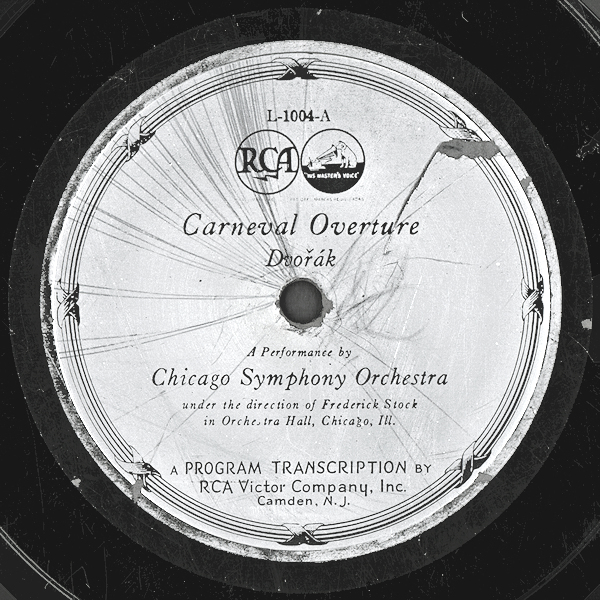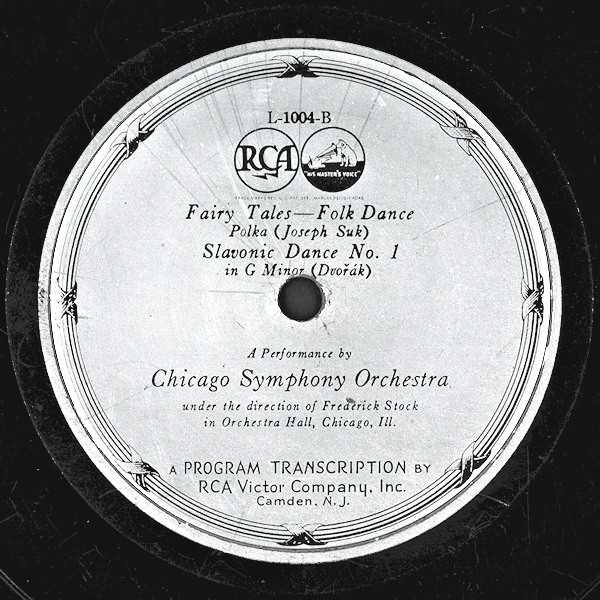 |
 |
| Carneval Overture |
Fairy Tales - Folk Dance
Slavonic Dance No. 8 in G Minor
(Not "No. 1" as the label says) |
| Chicago Symphony Orchestra (Conducted by Frederick Stock) |
Chicago Symphony Orchestra (Conducted by Frederick Stock) |
| Victor L-1004-A |
Victor L-1004-B |
| Matrix# LBVE-69773, Take 1 |
Matrix# LBVE-69774, Take 1 |
| December 19, 1925 |
December 22, 1926 |
| Chicago, Illinois. Orchestra Hall. |
Chicago, Illinois. Orchestra Hall. |
| Note: Dubbed to LP on August 27, 1931 with CVE-34049, Take 4 and CVE-34050, Take 2. |
Note: Dubbed to LP on August 27, 1931 with CVE-34069, Take 2 and CVE-37284, Take 2. |

